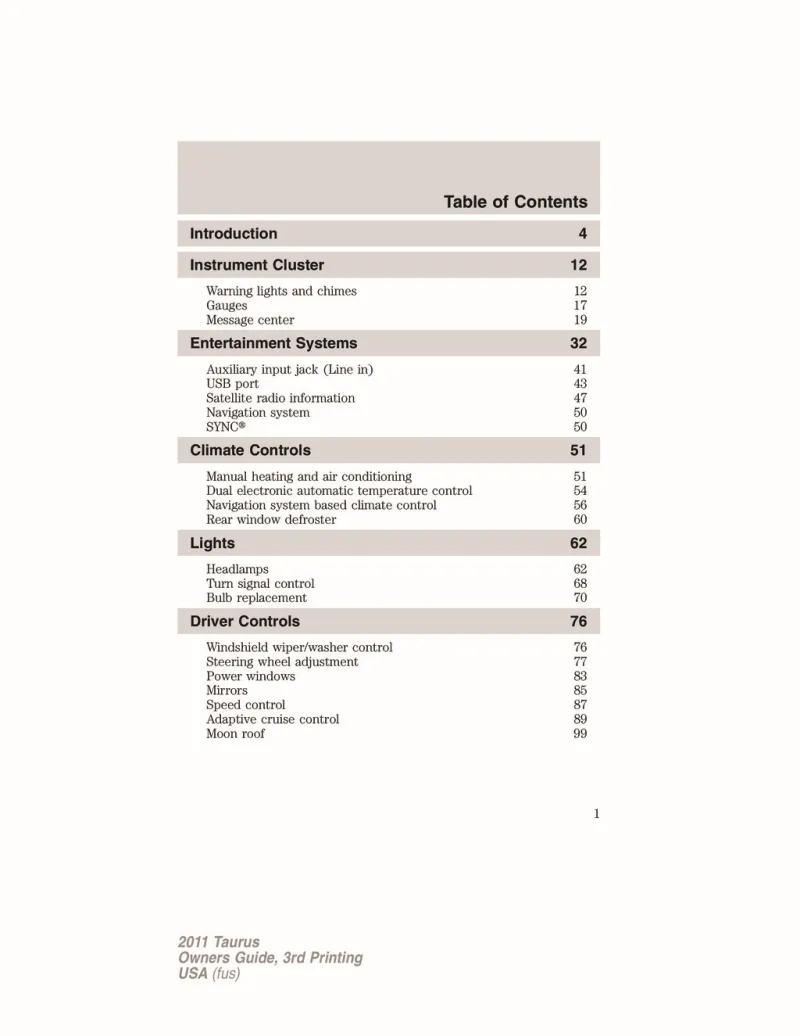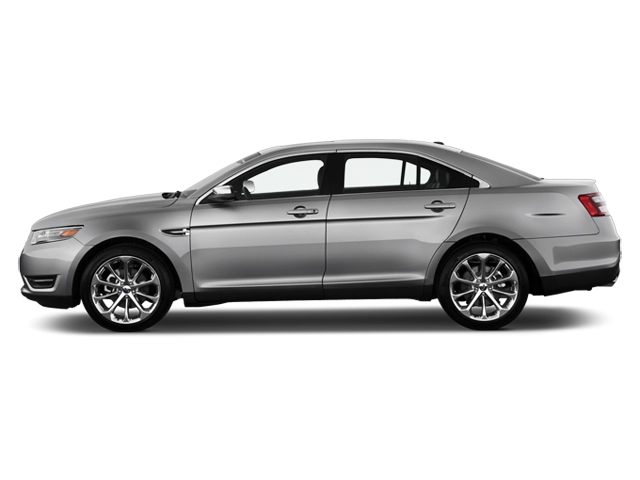2011 Ford Taurus Owner's Manual

Table of Contents
2011 Ford Taurus Overview
Introduction
The 2011 Ford Taurus stands as a testament to modern American automotive engineering, combining bold styling with advanced technology and impressive performance. This full-size sedan is designed not only to provide a comfortable ride but also to deliver power and efficiency, making it a suitable choice for families and professionals alike. With its iconic design and comprehensive feature set, the Taurus continues to capture attention on the road.
Powertrains
The 2011 Taurus offers two powerful engine options tailored to meet diverse driving needs. The base engine is a 3.5-liter V6, delivering a robust 263 horsepower and 249 lb-ft of torque, achieving an admirable fuel economy of approximately 18 mpg in the city and 28 mpg on the highway. For those seeking enhanced performance, the available 3.5-liter EcoBoost V6 turbocharged engine ups the ante with 365 horsepower and 350 lb-ft of torque, appealing to enthusiasts who value both speed and efficiency.
Trims
The Taurus is available in multiple trims, including the SE, SEL, Limited, and the sport-oriented SHO. Each trim level provides unique features and options, allowing buyers to select the configuration that best matches their lifestyle. The SE serves as the well-equipped base model, while the SEL offers additional luxury touches, and the Limited adds high-end amenities. The SHO stands out with its performance enhancements, sporty aesthetics, and premium interior finishes.
Features
The 2011 Ford Taurus is laden with an array of features designed for comfort, safety, and connectivity. Standard features include a Microsoft SYNC infotainment system, available navigation system, premium audio, and dual-zone climate control. Safety is a priority, with advanced options such as adaptive cruise control, blind-spot monitoring, and rear cross-traffic alert, ensuring that every drive is as secure as it is enjoyable.
Owner's Manual
The owner's manual for the 2011 Ford Taurus is an essential resource for both new and experienced drivers. It provides a comprehensive overview of the vehicle's features, maintenance schedules, and troubleshooting tips. With detailed diagrams and instructions, the manual serves as a valuable guide, allowing owners to maximize their vehicle's performance and longevity, while also ensuring a thorough understanding of all operational functions.
User manual download
The Ford Taurus owner manual for the 2011 model year is to be found in PDF downloadable format on this page. The owner manual for the model year 2011 is free and in English, but the repair manuals are usually not easy to get and may cost more.
Manual Questions
Fill the form below and someone will help you!

